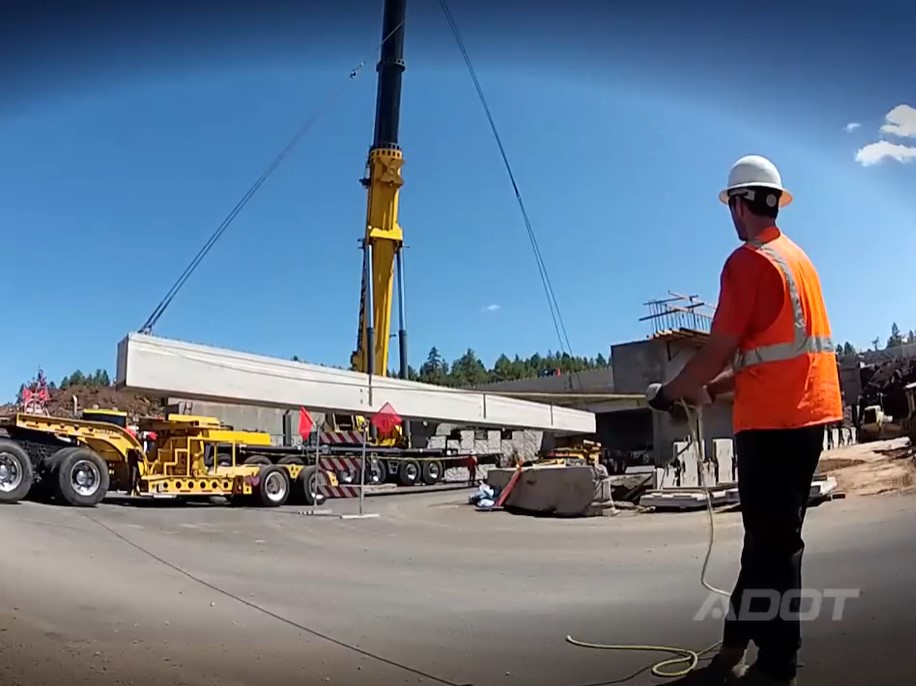Building a freeway: box girders
Building a freeway: box girders

As you can see in the video below, girders are the concrete and steel beams that enable the bridge to support the roadway and the vehicles on top of it.
They’re vital to the design of a bridge, but not all girders are the same…
Just like each bridge in Arizona is individually designed to hold up in the conditions unique to its surroundings, girders differ in size, shape and type, depending on the situation in which they’re being used.
This is a topic that can get complex real fast, so we’re going to keep it simple today by just focusing on two types of concrete box girders: prestressed concrete box girders (these are featured in the video below) and post tension concrete box girders.
But first, we’re going to need to look inside the girder itself…
The girders we’re referring to are made up of very strong steel strands or rods that are surrounded by concrete. The difference between the two types of girders hinges on when the tensioning (or stretching) of the steel takes place – it’s either before or after the concrete is poured.
Tensioning, by the way, is done to give the concrete some additional strength. This explanation from the ADOT Construction Manual might help better explain the need for tensioning/stretching:
Concrete is strong in compression and weak in tension. Reinforcing steel is generally used to carry the tensile loads placed on a concrete structure … Reinforcing steel is used to help concrete carry compressive loads and shear stresses that develop when loads move through a structure.
If a girder is prestressed or pretensioned, the steel strands are stretched to a predetermined stress and then concrete is poured around the strands.
“Once the concrete has hardened and gained sufficient strength, the ends of the strands are cut. The strands inside the concrete try to relax and shorten. However, there is now concrete bonded to the strands. As the strand shorten, they push the concrete together and induces a compressive stress into the concrete,” according to the ADOT Construction Manual.
More from the manual regarding post-tensioning…
Post-tensioning involves running steel ducts through the concrete (girders). Special anchors are placed at each end of the (girder). Then concrete is poured around the ducts and the anchors. Steel strands are run through the ducts. Once the concrete is strong enough, the strands are pulled at one end while anchored at the other.
Pulling (or jacking) of the strands causes the ends of the concrete (girder) to push toward each other. This induces compressive stresses along the entire length of the concrete member. After jacking, grout is injected into the ducts then concrete is poured around the ends of the anchors. Once the grout gains strength, the strand is now bonded to the concrete member in a way similar to pretensioning.
When to use prestressed vs. post-tensioned girders
State Bridge Engineer Jean Nehme says that using prestressed box girders is sometimes more convenient because they’re constructed off the project site.
“Because you build them off-site, you cut down on the time of construction,” said Nehme, adding that using prestressed girders can cut down on the need for traffic closures.
But, whether the girder is prestressed or post-tensioned, Nehme says by tensioning the reinforcing in the concrete, engineers can design stronger bridges that span longer distances.
“It provides better durability in the long term,” he said.
